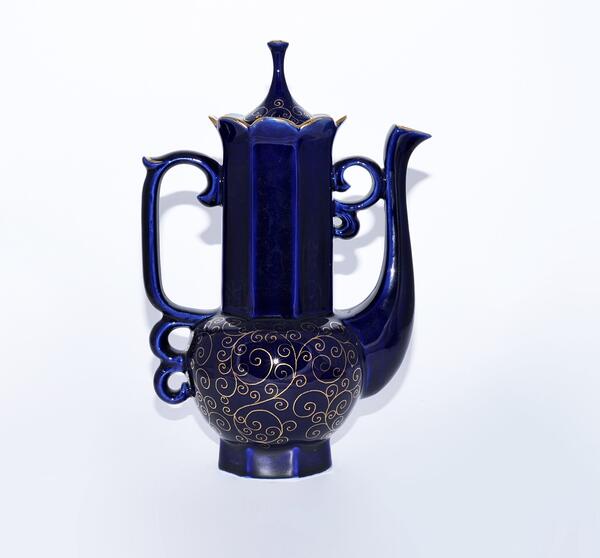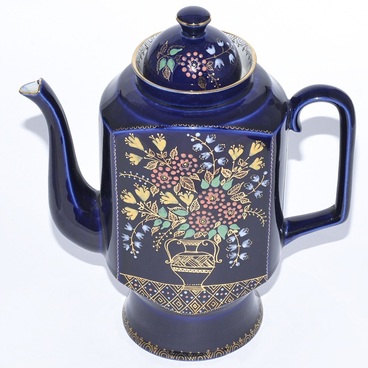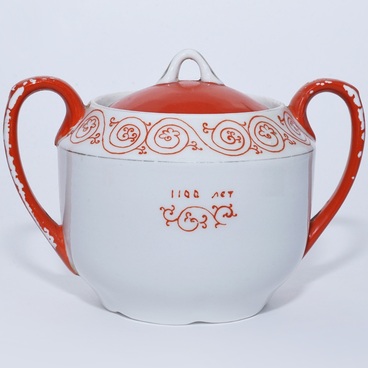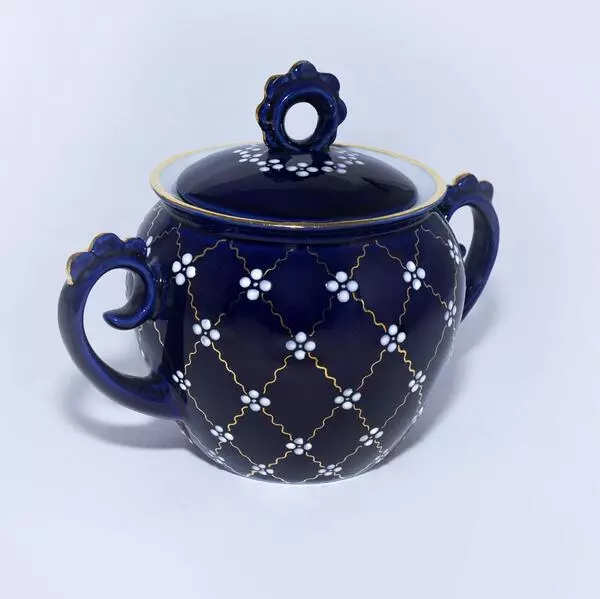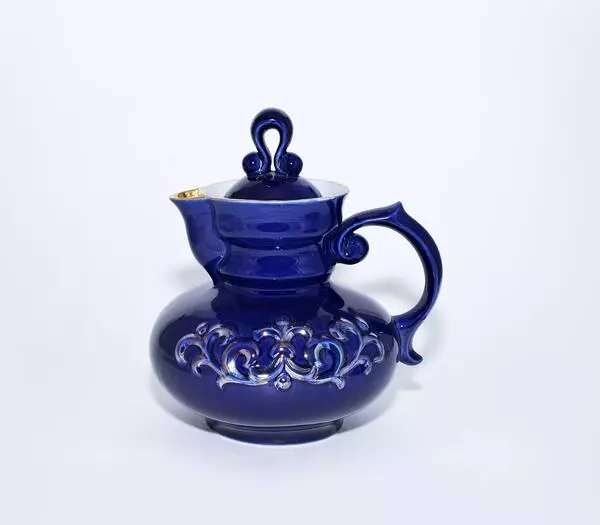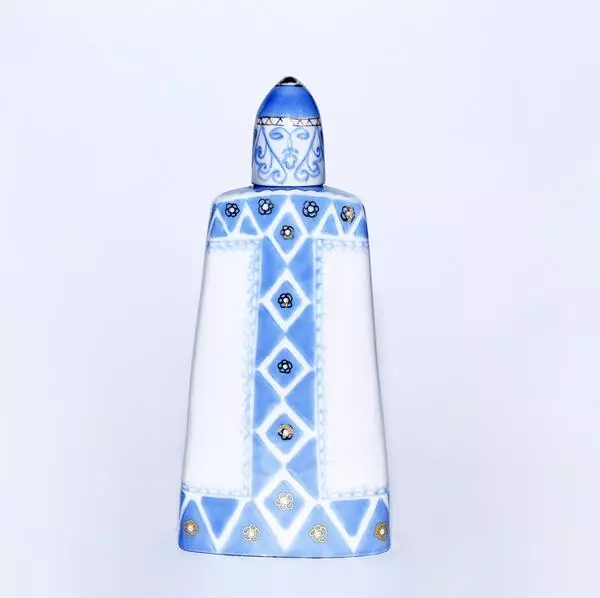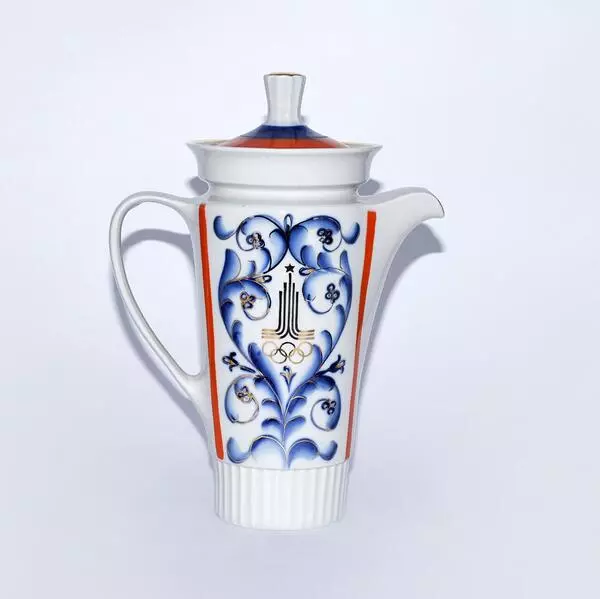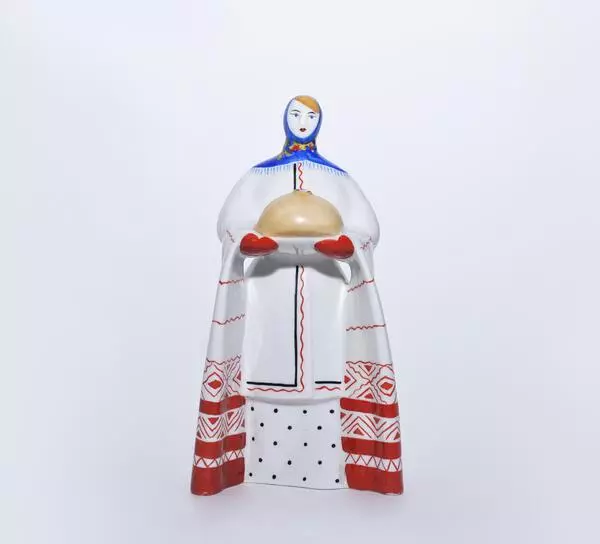The coffee pot from the set “Lace” was covered with dark blue cobalt. This pigment was most often used by other factories for painting individual elements, but it was at the Bronnitsky factory where the entire surface of tableware items was coated — they were called “blue Novgorod tableware”.
The artist Tamara Gavrilova often used the elements of Novgorod Old Russian architecture in her works: lavish decoration, delicate lines, and large, heavy shapes. The old churches in Novgorod differed from those in Kyiv, where architects preferred simpler and more compact buildings.
Tamara Gavrilova lived in Novgorod, and the windows of her apartment overlooked the ancient church of Nikita the Martyr — an architectural monument that was built in the 1550s-1560s, most likely by order of Ivan the Terrible. The view from the window was a source of inspiration for the artist when she worked on the “Lace” coffee set. The architecture of the church became the basis for the shape of the coffee pot: the lower part of the body is a round dome, and the upper part is an elongated faceted bell tower. The golden pattern on the surface resembled a delicate interweaving of metal threads.
The Church of Nikita the Martyr is located in the historical center of Novgorod, on the territory of the Plotnitsky End historical district. It was built between 1555 and 1562, but before that time, the church of the same name had been mentioned twice in the chronicles — it had burned down as a result of the fire in the Plotnitsky End. Perhaps a new stone church was built exactly on this site.
The architecture of the church combined the traditions of the Novgorod and Moscow schools, as well as the features of classicism. The researchers noted that the building was not typical for Novgorod. The builders did not consider the symmetry: an elongated bell tower with a long spire was added on the right, and a low, flattened chapel of St. Nicholas the Wonderworker was added on the left. In 1722, another antechurch was added to the church from the west side.
During Soviet times, the church did not operate — there was a chess club in it. In the 1990s, the building became empty and started to deteriorate, the windows were broken by wind and rain, and the frescoes inside crumbled. In the 2010s, the church was included in the Federal Program and its restoration began — the works are to continue for several years.
The artist Tamara Gavrilova often used the elements of Novgorod Old Russian architecture in her works: lavish decoration, delicate lines, and large, heavy shapes. The old churches in Novgorod differed from those in Kyiv, where architects preferred simpler and more compact buildings.
Tamara Gavrilova lived in Novgorod, and the windows of her apartment overlooked the ancient church of Nikita the Martyr — an architectural monument that was built in the 1550s-1560s, most likely by order of Ivan the Terrible. The view from the window was a source of inspiration for the artist when she worked on the “Lace” coffee set. The architecture of the church became the basis for the shape of the coffee pot: the lower part of the body is a round dome, and the upper part is an elongated faceted bell tower. The golden pattern on the surface resembled a delicate interweaving of metal threads.
The Church of Nikita the Martyr is located in the historical center of Novgorod, on the territory of the Plotnitsky End historical district. It was built between 1555 and 1562, but before that time, the church of the same name had been mentioned twice in the chronicles — it had burned down as a result of the fire in the Plotnitsky End. Perhaps a new stone church was built exactly on this site.
The architecture of the church combined the traditions of the Novgorod and Moscow schools, as well as the features of classicism. The researchers noted that the building was not typical for Novgorod. The builders did not consider the symmetry: an elongated bell tower with a long spire was added on the right, and a low, flattened chapel of St. Nicholas the Wonderworker was added on the left. In 1722, another antechurch was added to the church from the west side.
During Soviet times, the church did not operate — there was a chess club in it. In the 1990s, the building became empty and started to deteriorate, the windows were broken by wind and rain, and the frescoes inside crumbled. In the 2010s, the church was included in the Federal Program and its restoration began — the works are to continue for several years.

